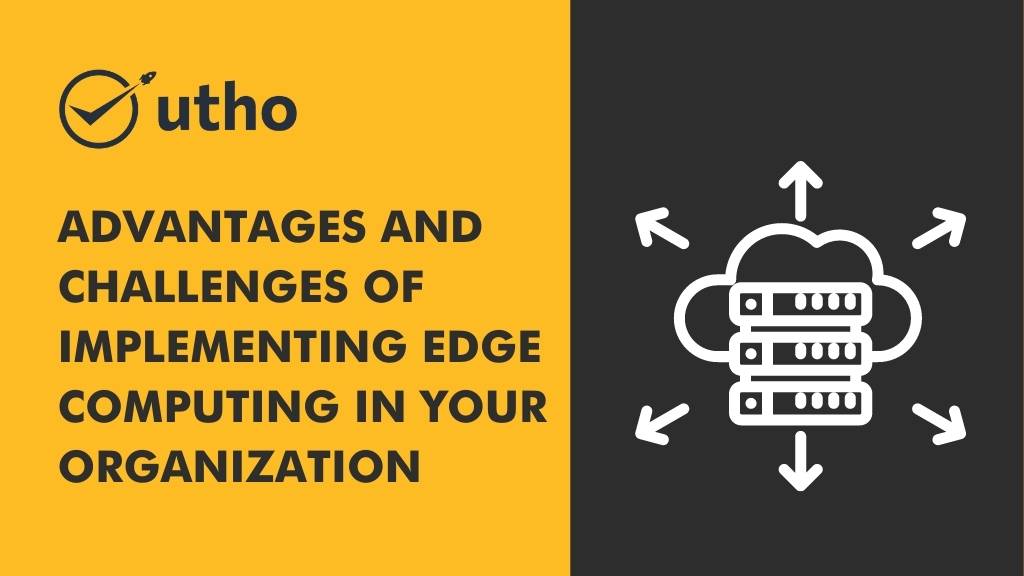Advantages and challenges of implementing edge computing in your organization

Edge computing is rapidly gaining momentum as a valuable addition to modern-day computing infrastructures. Technology has come a long way since it was first introduced, with many companies now embracing it for its advantages. However, as with any new technology, there are also challenges associated with implementing edge computing in your organization. In this article, we'll explore the advantages and challenges of implementing edge computing in your organization.
What is Edge Computing?
Edge computing is a distributed computing model that brings data processing and storage closer to the devices where it's being generated. In traditional computing models, data is sent to a central location for processing and analysis. With edge computing, the processing and analysis of data happen closer to the source, which can be a device, sensor, or gateway.
Advantages of Edge Computing
1. Reduced Latency
One of the biggest advantages of edge computing is reduced latency. Since the data processing and analysis happen closer to the source, there's less distance for the data to travel, which results in faster response times. This is especially important for applications that require real-time data processing, such as autonomous vehicles, drones, and IoT devices.
2. Improved Security
Edge computing can also improve security by keeping sensitive data closer to the source. Instead of sending data to a central location, where it can be intercepted and compromised, data is processed and analyzed on the device or gateway itself. This can greatly reduce the risk of data breaches and cyber-attacks.
3. Cost Savings
Edge computing can also lead to cost savings by reducing the amount of data that needs to be transmitted over a network. Instead of sending all data to a central location, only relevant data is sent, which can result in lower bandwidth costs and reduced storage requirements.
Challenges of Edge Computing
1. Complexity
One of the main challenges of edge computing is complexity. Since data processing and analysis happen closer to the source, there are often multiple devices, gateways, and systems involved in the process. This can make it difficult to manage and maintain, especially for organizations that don't have a lot of experience with edge computing.
2. Security Concerns
While edge computing can improve security, it can also introduce new security concerns. With data being processed and analyzed on multiple devices, gateways, and systems, there are more potential points of vulnerability that need to be secured.
3. Scalability
Scalability is another challenge of edge computing. As more devices and systems are added to the edge computing infrastructure, it can become difficult to scale the system effectively. This can result in performance issues and a decrease in overall efficiency.
Choosing the Right Edge Computing Solution
When it comes to choosing the right edge computing solution for your organization, it's important to consider the specific needs of your business. Some factors to consider include the size of your organization, the number of devices you have, and your budget.
It's also important to choose a solution that is scalable, secure, and easy to manage. At Microhost, we offer a range of edge computing solutions that are designed to meet the needs of businesses of all sizes. Our solutions are secure, scalable, and easy to manage, making it easy for you to implement edge computing in your organization.
Conclusion
In conclusion, edge computing has many advantages, including reduced latency, improved security, and cost savings. However, there are also challenges associated with implementing edge computing, including complexity, security concerns, and scalability. By choosing the right edge computing solution for your organization and partnering with an experienced provider like Microhost, you can reap the benefits of edge computing while minimizing the challenges.
Read Also:
Read Also: 6 Cloud Computing Myths, Busted!